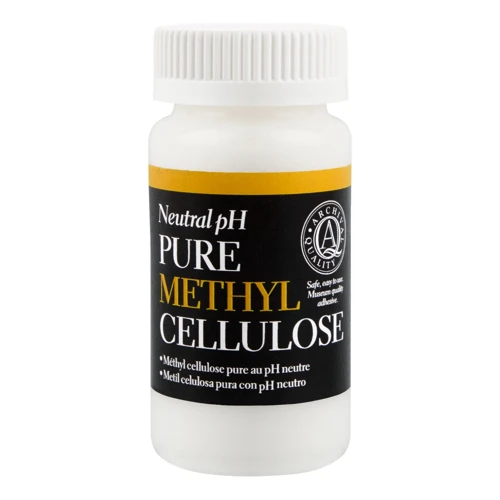As the world increasingly seeks sustainable solutions, the demand for eco-friendly products has touched the realm of adhesives, leading to the rise of cellulose glue. This plant-derived substance is gaining popularity due to its low environmental impact and versatility. But what exactly is this substance, and why is it considered a better alternative to traditional adhesives? Let’s delve into the world of cellulose adhesive and explore its significance.
Understanding Cellulose Adhesive
Cellulose adhesive is a sticky substance obtained from cellulose, a natural polymer found abundantly in the cell walls of plants. It’s a carbohydrate that can be chemically modified to possess adhesive properties. This substance is remarkable for its capacity to bind materials together while being gentle on the environment, a feature that sets it apart from many of its petrochemical counterparts.
The Rise of Natural Glue
The shift towards natural glue has been propelled by increasing awareness of the environmental and health hazards posed by synthetic adhesives. Cellulose glue, a quintessential natural glue, is made from renewable sources and is considered a sustainable option for various industries. Its ascent marks a significant turn in the quest for greener and safer adhesives.
Characteristics of Cellulose Glue
Cellulose glue is not just admired for its natural origins but also for the distinct characteristics that make it a preferred choice in numerous applications. From its bonding efficiency to its environmental safety, the properties of cellulose glue make it stand out.
Cellulose Glue Properties
The primary cellulose glue properties include high tensile strength, flexibility, and the ability to form a strong bond with a variety of materials. These properties are due to the molecular structure of cellulose, which can be tailored to meet specific needs during the production process.
Water-Soluble Glue Benefits
- Easy clean-up with water
- Non-toxicity, making it safe for use in household and school settings
- Good adhesion to porous materials like paper and wood
Biodegradable Adhesive Features
As a biodegradable adhesive, cellulose glue is designed to break down naturally when disposed of, leaving minimal environmental footprint. This degradation process reduces the amount of waste and pollution associated with adhesive use and disposal.
Eco-Friendly Aspects of Cellulose Glue
Cellulose glue stands out as an eco-friendly glue due to its plant-based composition and biodegradability. These aspects are not only beneficial to the environment but also contribute to a healthier living space for individuals.
Why Cellulose Glue is Eco-Friendly
The eco-friendly nature of cellulose glue is attributed to its origin from renewable resources, its non-toxic profile, and the absence of volatile organic compounds (VOCs) that contribute to air pollution.
Comparing Plant-Based Adhesives
When compared to other plant-based adhesives, cellulose glue is often favored for its robust performance and versatility. It can be formulated to meet various strength requirements and is compatible with a wide range of materials.
Common Cellulose Glue Applications
Cellulose glue applications span across multiple industries, highlighting its adaptability and effectiveness. Let’s take a closer look at where this remarkable adhesive is commonly used.
Industrial Uses of Cellulose Glue
In the industrial sector, cellulose glue is widely used in the production of paper products, textiles, and packaging. It serves as an excellent binder for eco-friendly packaging materials, a sector that’s growing rapidly in response to consumer demand for sustainable options.
Cellulose Glue in Everyday Products
Everyday products such as paper bags, labels, and even some types of wallpaper may contain cellulose glue. Its ability to adhere to a wide range of surfaces makes it an indispensable component in the manufacturing of numerous household items.
Working with Cellulose Glue
Applying cellulose adhesive is a straightforward process, but there are certain tips and techniques that can enhance its effectiveness and ensure a strong, lasting bond.
How to Apply Cellulose Adhesive
To apply cellulose glue, the surface must first be clean and dry. The adhesive can then be spread evenly over the area, and the materials to be bonded should be pressed together firmly until the glue sets.
Tips for Best Results with Water-Soluble Glue
- Apply at room temperature for optimal adhesion
- Allow sufficient drying time, which can vary depending on humidity and temperature
- Store the glue in a cool, dry place to maintain its shelf life
Cellulose Glue vs. Other Adhesives
When comparing cellulose glue to other adhesives, it’s essential to consider both performance and environmental impact. Cellulose glue often emerges as the superior choice, particularly in eco-conscious applications.
Cellulose Glue vs. Synthetic Adhesives
Synthetic adhesives may offer strong bonding capabilities, but they often contain chemicals that can be harmful to the environment and human health. Cellulose glue, on the other hand, provides a safe and sustainable alternative without compromising on performance.
Advantages of Plant-Based Adhesive in Manufacturing
In manufacturing, the advantages of plant-based adhesive such as cellulose glue include reduced environmental regulations, safer work environments, and the ability to appeal to consumers seeking sustainable products.
Future of Cellulose Glue
The future of cellulose glue looks bright, with ongoing research and innovation opening new possibilities for its application and efficiency. As the world leans more towards sustainability, the demand for biodegradable adhesive is set to rise.
Innovations in Biodegradable Adhesive
Innovations in biodegradable adhesive focus on enhancing the performance of cellulose glue while maintaining its eco-friendly credentials. Advances in technology may lead to even stronger bonds and faster setting times in the near future.
For those interested in the world of adhesives and their various applications, understanding the different types of glue is crucial. While exploring cellulose glue and its uses, you might also be curious about other adhesive options. Check out our in-depth articles on epoxy glue, acrylic glue, and fibrin glue to get a comprehensive understanding of these bonding agents and how they can be applied in various projects.
Expanding Cellulose Glue Uses and Market Trends
The expanding cellulose glue uses across various industries, including automotive, construction, and textiles, signify its growing importance. Market trends suggest a continued increase in demand, driven by the push for more sustainable manufacturing practices.




